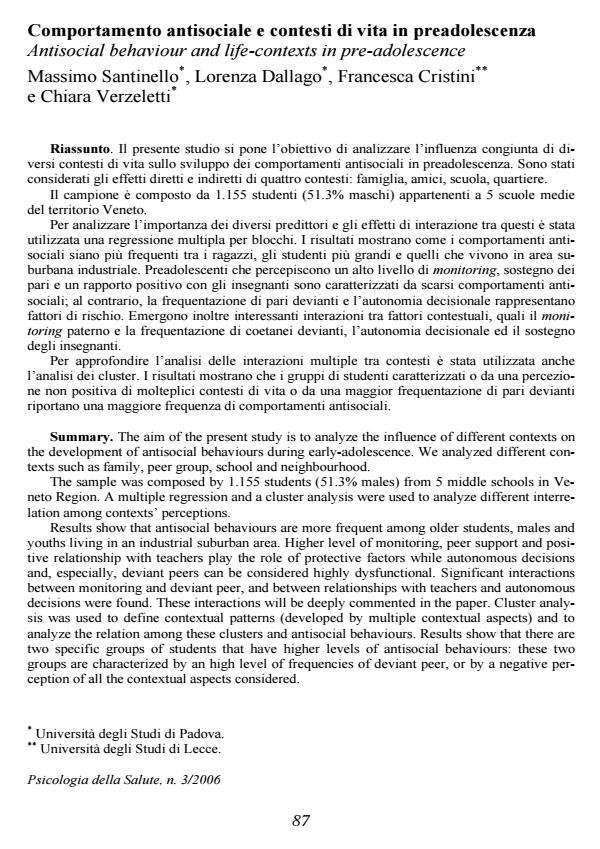Comportamento antisociale e contesti di vita in preadolescenza
Titolo Rivista PSICOLOGIA DELLA SALUTE
Autori/Curatori Massimo Santinello, Lorenza Dallago, Francesca Cristini, Chiara Verzeletti
Anno di pubblicazione 2007 Fascicolo 2006/3
Lingua Italiano Numero pagine 24 P. 87-110 Dimensione file 319 KB
DOI
Il DOI è il codice a barre della proprietà intellettuale: per saperne di più
clicca qui
Qui sotto puoi vedere in anteprima la prima pagina di questo articolo.
Se questo articolo ti interessa, lo puoi acquistare (e scaricare in formato pdf) seguendo le facili indicazioni per acquistare il download credit. Acquista Download Credits per scaricare questo Articolo in formato PDF

FrancoAngeli è membro della Publishers International Linking Association, Inc (PILA)associazione indipendente e non profit per facilitare (attraverso i servizi tecnologici implementati da CrossRef.org) l’accesso degli studiosi ai contenuti digitali nelle pubblicazioni professionali e scientifiche
The aim of the present study is to analyze the influence of different contexts on the development of antisocial behaviours during early-adolescence. We analyzed different contexts such as family, peer group, school and neighbourhood. The sample was composed by 1.155 students (51.3% males) from 5 middle schools in Veneto Region. A multiple regression and a cluster analysis were used to analyze different interrelation among contexts’ perceptions. Results show that antisocial behaviours are more frequent among older students, males and youths living in an industrial suburban area. Higher level of monitoring, peer support and positive relationship with teachers play the role of protective factors while autonomous decisions and, especially, deviant peers can be considered highly dysfunctional. Significant interactions between monitoring and deviant peer, and between relationships with teachers and autonomous decisions were found. These interactions will be deeply commented in the paper. Cluster analysis was used to define contextual patterns (developed by multiple contextual aspects) and to analyze the relation among these clusters and antisocial behaviours. Results show that there are two specific groups of students that have higher levels of antisocial behaviours: these two groups are characterized by an high level of frequencies of deviant peer, or by a negative perception of all the contextual aspects considered.
Massimo Santinello, Lorenza Dallago, Francesca Cristini, Chiara Verzeletti, Comportamento antisociale e contesti di vita in preadolescenza in "PSICOLOGIA DELLA SALUTE" 3/2006, pp 87-110, DOI: